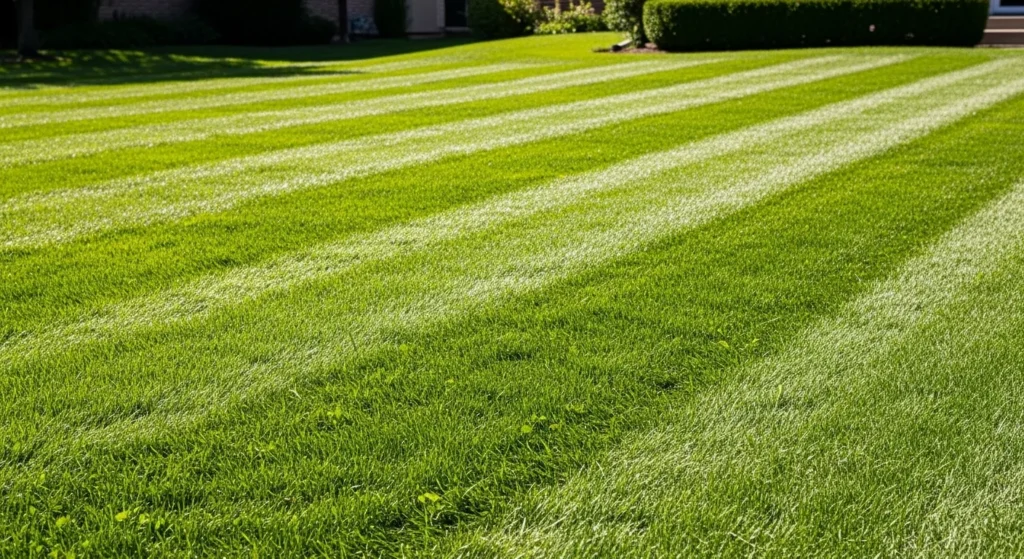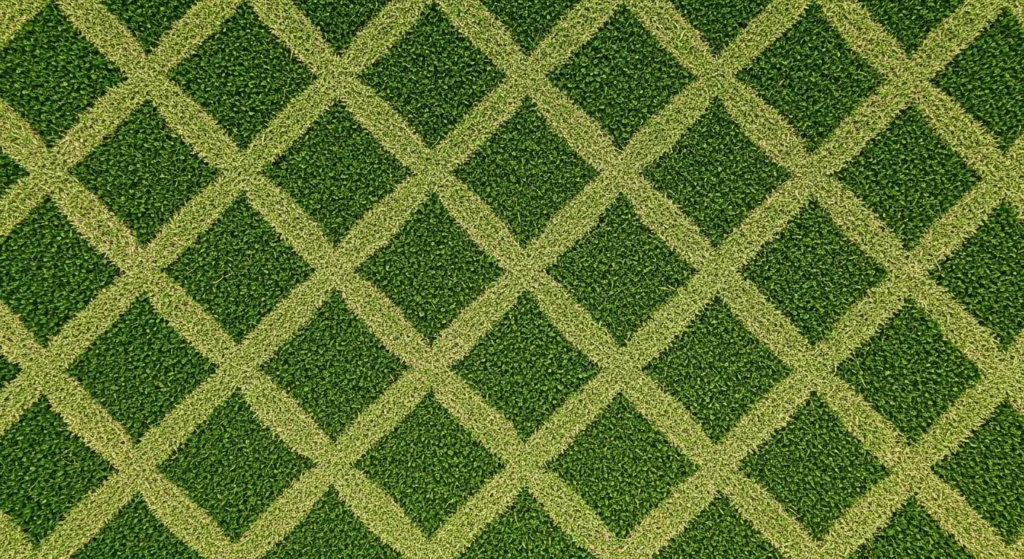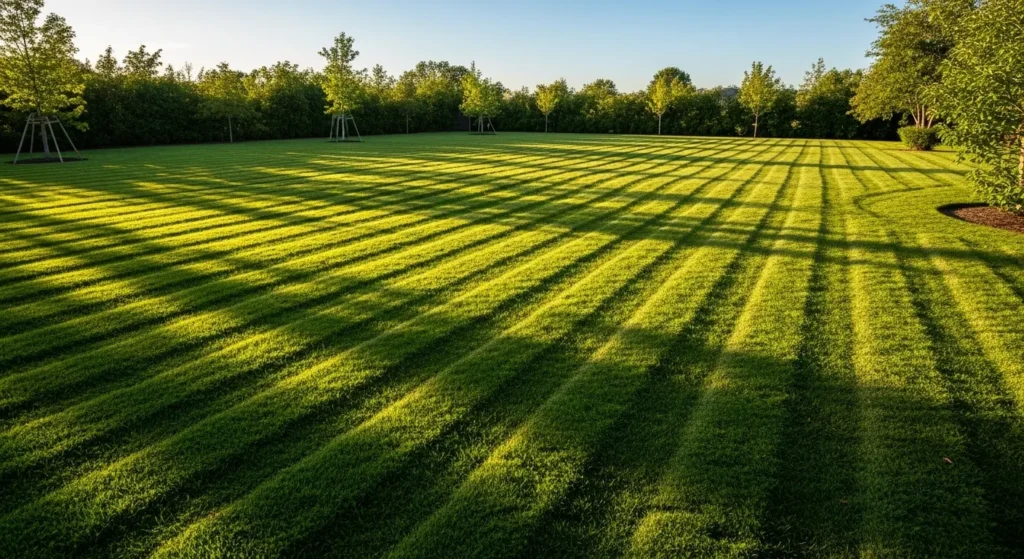A well-mowed lawn draws eyes from the street. Patterns add style and make your yard stand out. They also help grass grow strong. This guide covers patterns, steps, and tips. You will learn how to pick the right one for your yard.
Why Use Mowing Patterns?
Patterns do more than look good. They keep soil loose. Grass stays even. Weeds find it hard to grow. Change patterns each time you mow. This stops ruts from wheels. Your lawn gets better air and water.
Patterns reflect light off grass blades. Bent one way, grass looks dark. Bent the other way, it looks light. Use this for stripes or shapes. Cool-season grass like fescue shows patterns best. Warm-season types like Bermuda work too but show less.
Tools You Need
Start with a sharp mower. Dull blades tear grass. Sharpen them every 20 hours of use. A roller attachment helps bend grass for clear lines. Push mowers work for small yards. Riding mowers suit big ones.
Mow when grass is dry. Wet grass clumps and bends wrong. Cut no more than one-third of the blade each time. This keeps roots deep and healthy.
Common Mowing Patterns
Try these patterns. Each fits different yard shapes. Start simple. Practice on flat areas.
Straight Stripes
Stripes run parallel. They make yards look long or wide. Good for square lawns.
How to do it:
- Trim edges first.
- Pick a straight guide like a fence.
- Mow back and forth. Overlap each pass by 2 inches.
- Turn slow at ends.
This pattern hides small bumps. It suits most homes.

Checkerboard
This looks like a board game. It adds tidy lines.
Steps:
- Mow stripes one way.
- Go over again at 90 degrees.
- Finish with a border cut.
Best for flat, open spaces. It takes more time but looks sharp.
Diamond
Diamonds tilt the checkerboard. They create depth.
To make it:
- Start with stripes.
- Mow next at 45 degrees.
- Keep lines even.
Use this for corner lots. It draws eyes to the house.

Waves or Curves
Waves add flow. They fit yards with trees or beds.
Method:
- Mow a gentle curve first.
- Follow it back.
- Keep curves smooth.
This hides odd shapes. It softens hard edges.
Circles
Circles go around a center point. Good around trees.
How:
- Start at the middle.
- Mow out in rings.
- Alternate directions.
This saves turns. It works for round features.
Zigzag
Zigzags bring energy. They stand out.
Steps:
- Plan angles on paper.
- Mow sharp turns.
- Overlap for clean lines.
Try this on slopes. It grabs attention from afar.
Crisscross
This crosses diagonals. It looks like a field.
To create:
- Mow one diagonal.
- Cross with another.
- Finish edges.
Great for large yards. It boosts depth.

Pick the Right Pattern for Your Yard
Match patterns to your space. Stripes for long yards. Circles for spots with obstacles. Consider grass type. Check your climate for best growth. For tips on grass choices, see our guide on best grass types for different climates.
Small yards suit simple lines. Big ones allow complex shapes. Avoid patterns on steep hills to prevent slips.
Health Tips for Patterns
Change direction each mow. This stops grass from leaning one way. It cuts down on bald spots. Mow at 3 inches high for most grass. This shades soil and holds water.
Water after mowing if dry. Fertilize in spring for thick turf. For dry areas, read about creating a drought-resistant lawn.
Common mistakes:
- Cutting too short stresses grass.
- Mowing wet causes clumps.
- Same pattern wears paths.
Fix weeds early. Sharp edges frame patterns. For watering help, check lawn watering schedule mistakes to avoid.
Answers to Common Questions
People often ask how patterns help health. They prevent compact soil. What height works best? Aim for 2.5 to 3.5 inches. Do patterns hide damage? Yes, waves can mask spots.
Related ideas include using a striping kit. Or adding edging for sharp looks. For more on borders, see cheap lawn edging ideas.
Why do pros use rollers? They bend grass more for bold lines. Can I do this without one? Yes, but patterns fade faster.
Final Tips
Mow in late morning. Sun dries dew. Avoid hot afternoons. Clean mower after use. Store it dry.
For pro results, hire help sometimes. But you can do most at home. Patterns raise home value by improving looks. Keep at it for green results.
Learn more from sites like Family Handyman on lawn designs.
Your yard can shine with these steps. Start small. See the change.
